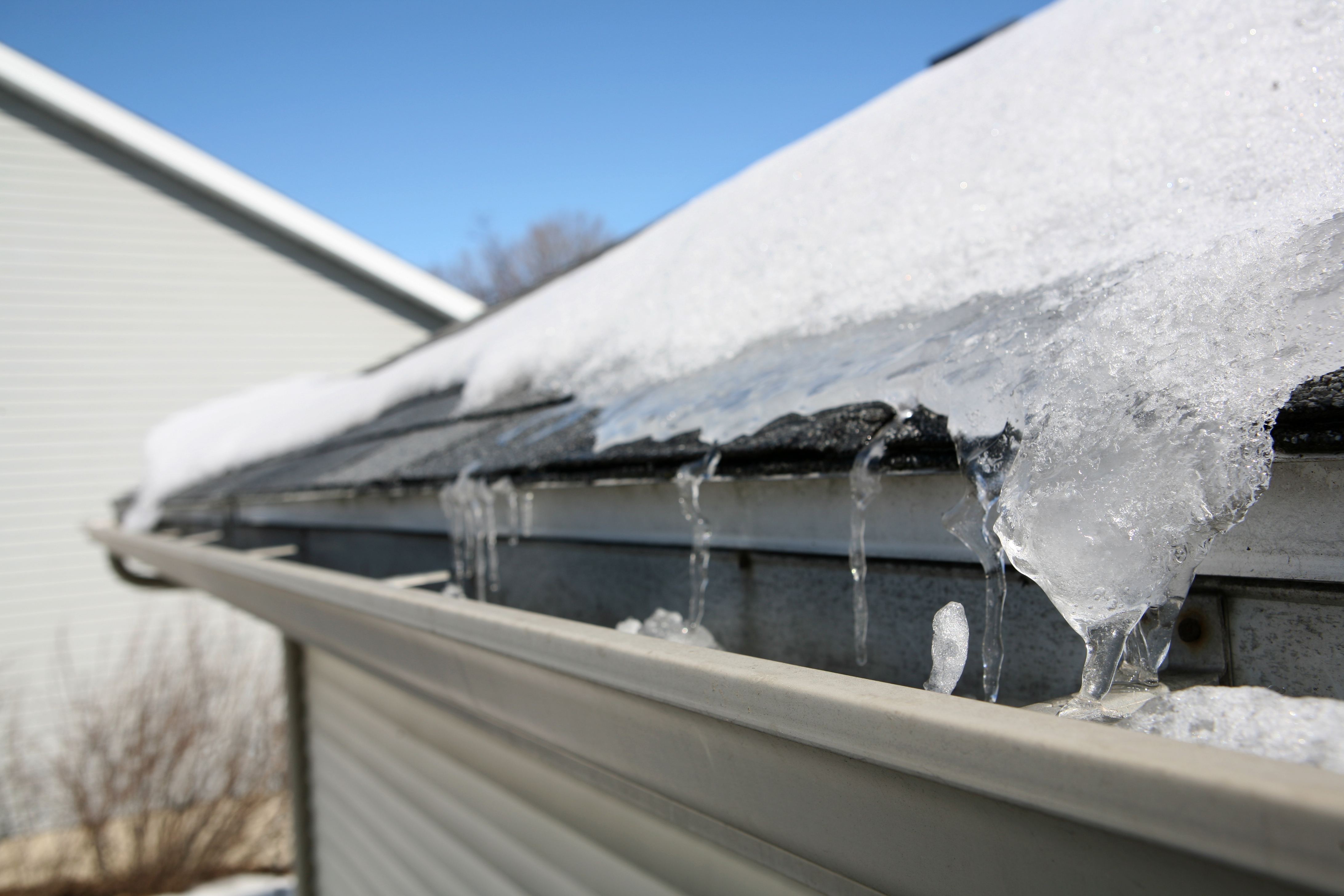
Ice dams form when melted snow runs down your roof and refreezes near the edge. But this only happens when the main part of your roof warms to above 32 degrees F, which is warm enough to melt the snow, while the roof edge remains below freezing.
What raises the temperature of the roof is not sunshine, but an attic that is too warm. Heat escaping from the living area into the attic warms the underside of the roof deck and melts the snow from the bottom up. The water then trickles down to the edge of the roof, which is still cold enough to freeze it again.
It stands to reason, then, that the secret to preventing ice dams is to keep your roof cold enough to prevent the snow from melting in the first place. Here’s how to make that happen:
- Build up attic insulation. Proper insulation will prevent rising heat from warming the attic space and the roof. Blown-in cellulose insulation is the most effective as it seals better than rolled fiberglass batts. It is worth having a professional tackle this important job. As a bonus, you are likely to find your heating bills will go down thank to the reduction in heat loss.
- Close and seal gaps. Even a well-insulated attic has gaps and cracks where heat can bypass the insulation and warm the roof. Plug these leaks around pipes, chimneys, access hatches, light fixtures and wall tops with foam, caulk or blown-in insulation to more completely seal off the attic.
- Add a roof ridge vent and soffit vents. Properly positioned vents will draw outside air through your attic and balance the temperature between the outside and inside. The ridge vent in particular is important for proper airflow. Be sure any insulation you install does not block the flow of air through soffit vents.
After a particularly heavy snowfall, it helps to rake the snow off your roof using a snow rake. This helps reduce the amount of snow available to melt and cause problems. Always follow safety precautions when working on or around the roof, particularly when snow and ice make footing precarious. And never use a snow rake while standing on a ladder!
Take steps now to create a cold roof before heavier snowfall begins. Call Hi-Tech Windows & Siding toll free at (800) 851-0900 for information on adding attic insulation or for an evaluation of your roof’s ventilation.
- Category: Roofing Contractor
- 0 comment
